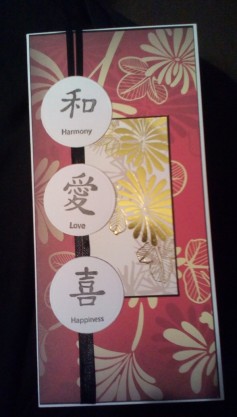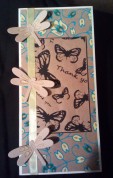My Thrifty Crafting Pledge is leading me to really concentrate on the ways I get the most from my craft stash. I thought I’d make a list of nifty thrifty tips and share it with you. Hopefully other people have some tips which would help us all as well.
– Remove the centre of pieces of expensive card stock when using them for matting and layering. This way, the effect of matting and layering remains, but I am left with more card stock for another time – this works time and time again, saving me several pennies each time!
– Cut the ribbons intended to help hang clothes out (stops them from sticking out and/or tickling you) AND you can use them for embellishments on cards and scrapbooks.
– Make scraps your best friends. They are so versatile, can be used as the main feature of a card, or punched into, used for matting and layering etc etc (picture, link to Pinterest***********)
– Use the packaging! Not only is it free, but often it is absolutely perfect for the feel of the stamp or embossing folder you have. (****pictures****)
– Don’t throw away your mistakes.
~Try clever placement of embellishments to disguise errors
~Re-cover with new card stock and start again
~If it is irredeemable, can you turn it over and use the back? If it is a whole card front, remove the back and use it for stamping or matting and layering at a later date
– Look around you for things you can repurpose. I love making roll-up flowers from envelopes and old magazine pages
– Be organised.
~It’s much easier to find what you’ve got if it’s together, or follows your personal logic (I stick an envelope in with a paper stack and keep the scraps from that range in there, my best friend stores her fabric scraps by colour)
~ Plan cards to make the most of your paper. There are loads of one-page-wonder posts on the internet and on Pinterest which can help you get the hang of seeing multiple cards in one sheet.
– Don’t be afraid to cut into your die cuts and punched shapes – it opens up a huge number of other ways you can use them ********
– Use the ‘negative’ left after you die cut. ********
– Mask off bits of your stamps to open up other uses *******
– Look to other people for inspiration on how to use your stash. There are loads of websites where you can see how other people have used stamp sets and often I haven’t thought to use it for that occasion (docrafts website, Pinterest, ***that website you tell it which stamp set you have etc******



















Recent Comments